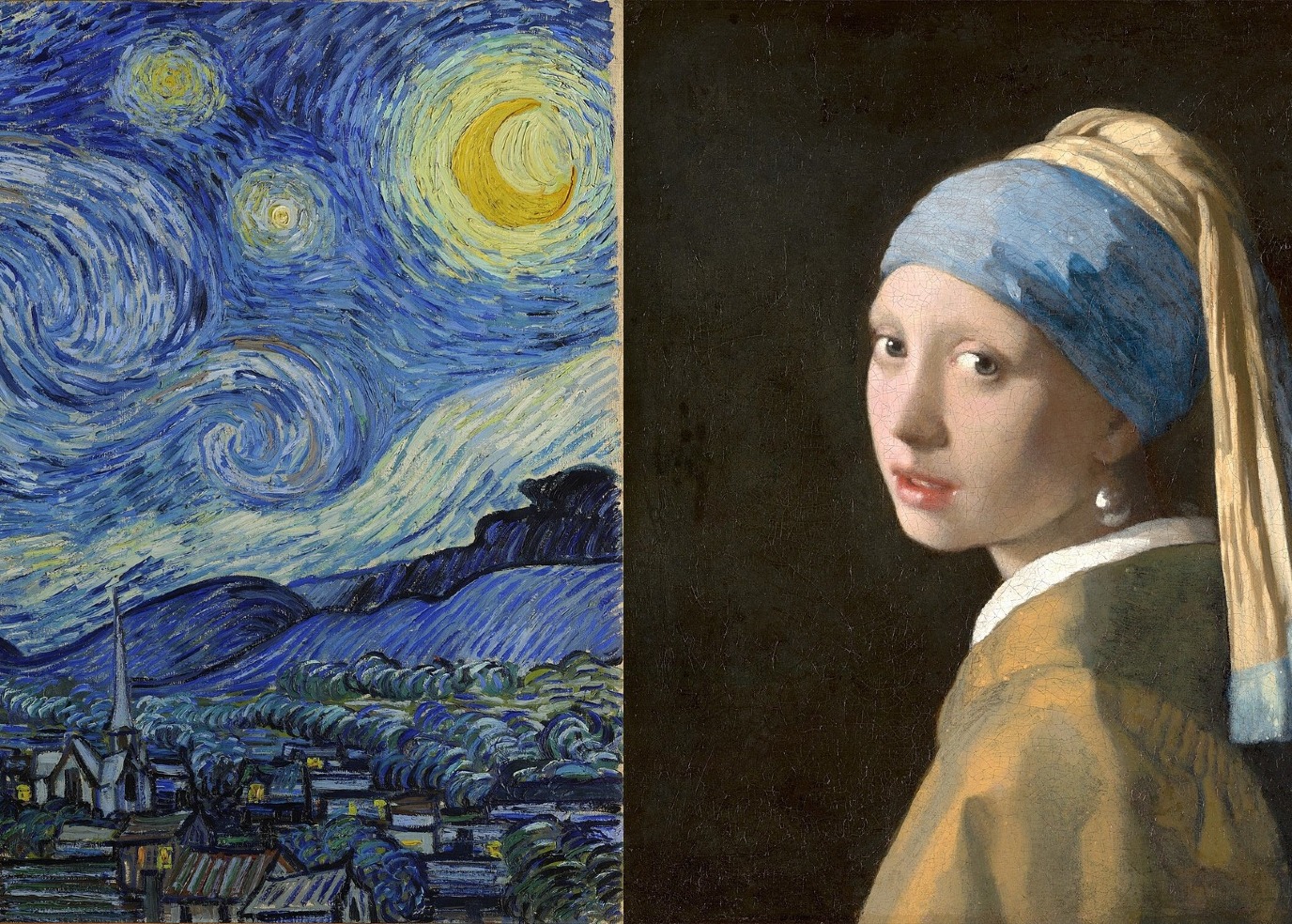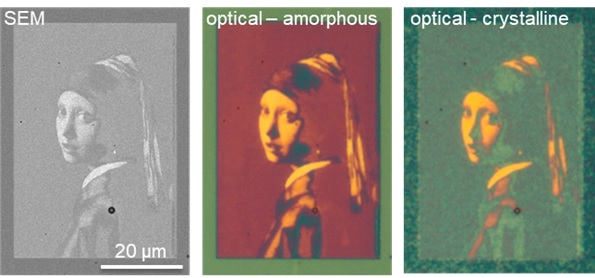These paintings show the future of optoelectronics

Scientists at the Zernike Institute for Advanced Materials, University of Groningen, have just reproduced two famous paintings at the micrometre scale. This wasn’t just a homage to Dutch masters Johannes Vermeer and Vincent van Gogh, but a proof of principle in manufacturing minute optical systems.
FSE Science Newsroom | René Fransen
The canvas for these reproductions was formed by a layer of reflecting gold. On top of that, scientists led by professor of Nanostructured Materials and Interfaces Bart Kooi deposited a thin film of Sb2Se3 (antimony-selenium). Light-reflecting off the gold and passing through the film then takes on different colours, depending on the thickness of the film – just like a drop of oil on water will produce colourful reflections.

Lithography
The pictures were first transformed into a greyscale image. An ion beam was then calibrated to mill the thin film to a depth that corresponded to the greyscale with nanometre precision. Light that is reflected through the thin film takes on a colour that depends on the local thickness of that film, resulting in a real colour image of the ‘Girl with a Pearl Earring’ by Vermeer (and also van Gogh’s Starry Night, not shown here).
This miniature art was created as a proof of principle, to show that ion beam milling can create nanometre-scale pixels with continuous height differences, something that isn’t possible when using traditional techniques like lithography. As the Sb2Se3 thin film is a phase-change material, it is also possible to change the properties of the pixels by switching their structure using electric pulses.
These tiny pixels could perhaps one day be used in displays, but will more likely be applied to create optical chips and other applications in optoelectronics.
The research was published in the journal Advanced Materials on 1 September.
| Last modified: | 10 February 2025 09.17 a.m. |
More news
-
13 June 2025
Team 'Lord of the Roads' second at RDW Self Driving Challenge
The University of the North team 'Lord of the Roads', in which students from educational institutions Noorderpoort, Hanzehogeschool and the University of Groningen collaborated, came second in the RDW Self Driving Challenge (SDC). The team competed...
-
12 June 2025
Those most affected by modern agriculture
Farmers only grow a limited number of crops these days, which has significant consequences for the animals that live there. Raymond Klaassen researches what adjustments farmers could make to improve the conditions for the species most affected by...
-
06 June 2025
India-Netherlands Hydrogen Valley Fellowship Programme announced
To coincide with World Environment Day, 5 June 2025, the Indian Department of Science and Technology and the University of Groningen yesterday announced a Hydrogen Valley Fellowship Programme Partnership, allowing talented Indian scholars working on...
